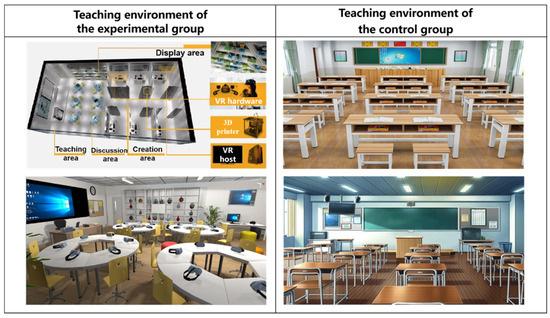Mastering VR/AR in the Classroom: Effective Teacher Training Strategies for Modern Education
Virtual Reality (VR) and Augmented Reality (AR) are revolutionizing modern education, opening new doors for interactive learning. As immersive technologies become increasingly accessible, equipping teachers with the right skills is crucial. This thorough guide explores the most effective teacher training strategies for mastering VR/AR in the classroom, the benefits of immersive learning, and actionable tips for seamless technology integration.
Why VR/AR in the Classroom?
VR and AR technology offer unparalleled opportunities for experiential learning. From virtual field trips to hands-on science experiments, these tools can transform abstract concepts into tangible experiences. However, the key to success lies in preparing teachers to confidently and creatively utilize VR/AR for student engagement and learning outcomes.
- Immersive learning experiences boost student motivation and memory retention.
- Personalized instruction allows differentiated learning for diverse classrooms.
- Real-world simulations provide safe environments to explore complex ideas.
The Importance of Teacher Training for VR/AR Integration
Successfully incorporating VR and AR into lesson plans requires more than just handing out headsets or tablets. Teachers must understand both the technology and the pedagogy behind its effective use. Professional growth tailored for immersive education empowers teachers to:
- Design VR/AR-driven lesson plans aligned with learning objectives.
- Troubleshoot technical issues on the fly.
- Assess student progress in non-traditional, interactive environments.
- Address digital safety, privacy, and ethical considerations.
Without targeted training, the full potential of VR/AR often goes untapped.
Effective teacher Training Strategies for VR/AR
1. Hands-On Workshops and Interactive Demos
The best way to learn immersive technology is by experiencing it firsthand. Host workshops where teachers can:
- Explore a variety of VR/AR applications relevant to their subjects.
- Practice basic troubleshooting, device handling, and classroom management strategies.
- Exchange tips and ideas with peers to foster collaborative learning.
2.Online Courses and Certification Programs
Flexible eLearning modules can introduce educators to VR/AR basics, content creation tools, and best practices. Look for platforms offering teacher-focused certification with real-world projects and up-to-date resources.
3. Peer Mentorship and Professional Learning Communities (PLCs)
Establishing a VR/AR ambassador or early adopter within your faculty can provide ongoing support for other teachers. Regular PLC meetings encourage sharing of experiences, resources, and innovative lesson ideas.
4. Access to VR/AR Resource Libraries
Providing a curated library of lesson plans, tutorials, and sample activities helps teachers incorporate immersive technology without reinventing the wheel. Consider developing a shared repository using platforms like Google Drive, OneDrive, or a centralized LMS.
5. Integration with Existing Curriculum
Teacher training should emphasize how VR/AR can enhance—not replace—core curriculum goals.Offer guidance on seamlessly weaving immersive content into standard lesson structures for science, history, language arts, and more.
Benefits of Teacher Training in Immersive Technology
- Increased Teacher Confidence: Educators feel more comfortable experimenting with new teaching techniques.
- Enhanced student Engagement: Well-trained teachers can deliver more compelling and meaningful VR/AR experiences.
- Improved Learning Outcomes: Properly guided immersive activities lead to deeper conceptual understanding for students.
- Scalable Implementation: A foundation in VR/AR pedagogy makes it easier to expand use across grade levels and subject areas.
A well-trained faculty ensures that the investment in VR/AR technology translates into transformative classroom experiences.
Case Studies: Successful VR/AR Implementation in Education
case study #1: Virtual Field Trips for Middle School Social Studies
at Lincoln Middle School,Illinois,training sessions led by a local university enabled teachers to guide students on virtual field trips to ancient Rome and the Great Wall of China. Post-training, teachers reported a 35% increase in test scores related to world history concepts and a noticeable boost in classroom participation.
Case Study #2: Augmented Reality in STEM classrooms
Parkview High School, Texas adopted AR simulations to visualize molecular structures in chemistry lessons. The school invested in ongoing professional development, resulting in a 42% rise in student performance on STEM assessments and positive feedback from both teachers and students regarding lesson clarity.
Practical Tips for Teachers Mastering VR/AR in the Classroom
- Start Small: Begin with simple VR/AR apps or activities that require minimal setup. Gradually introduce more complex experiences as confidence grows.
- prioritize Student Safety: ensure devices are cleaned regularly and monitor student interactions to prevent motion sickness or inappropriate usage.
- Prepare Backup Plans: Have traditional activities ready in case of technical difficulties so lessons remain on track.
- Gather Feedback: Regularly solicit input from students about what works and what could be improved for future VR/AR lessons.
- Stay Updated: Subscribe to VR/AR in education newsletters or join online forums to learn about the latest trends and resources.
- Document Best Practices: Keep a shared log of what worked well and lessons learned. This encourages a culture of continuous betterment within your school.
Common Challenges and Solutions
Many educators encounter hurdles when first integrating VR/AR into the classroom. Here’s how targeted teacher training can address them:
- Technical Difficulties: training includes troubleshooting scenarios and support resources.
- Limited Resources: teachers learn to make the most of low-cost or shareable VR/AR solutions.
- Curriculum fit: Instruction focuses on curriculum mapping and lesson adaptation.
- time Constraints: PD programs recommend bite-sized activities that fit within existing schedules.
Conclusion: Empowering Educators for the Future of Learning
Mastering VR/AR in the classroom is about more than adopting new gadgets—its about unlocking powerful ways to engage, inspire, and educate diverse learners. Effective teacher training lies at the heart of successful immersive technology integration, ensuring educators are equipped to create safe, memorable, and impactful experiences for every student.By embracing strategic professional development, leveraging community resources, and celebrating each step of experimentation, schools can prepare both teachers and students for the future of education.
Start your journey today—embrace VR/AR teacher training and reimagine what’s possible in your classroom!

